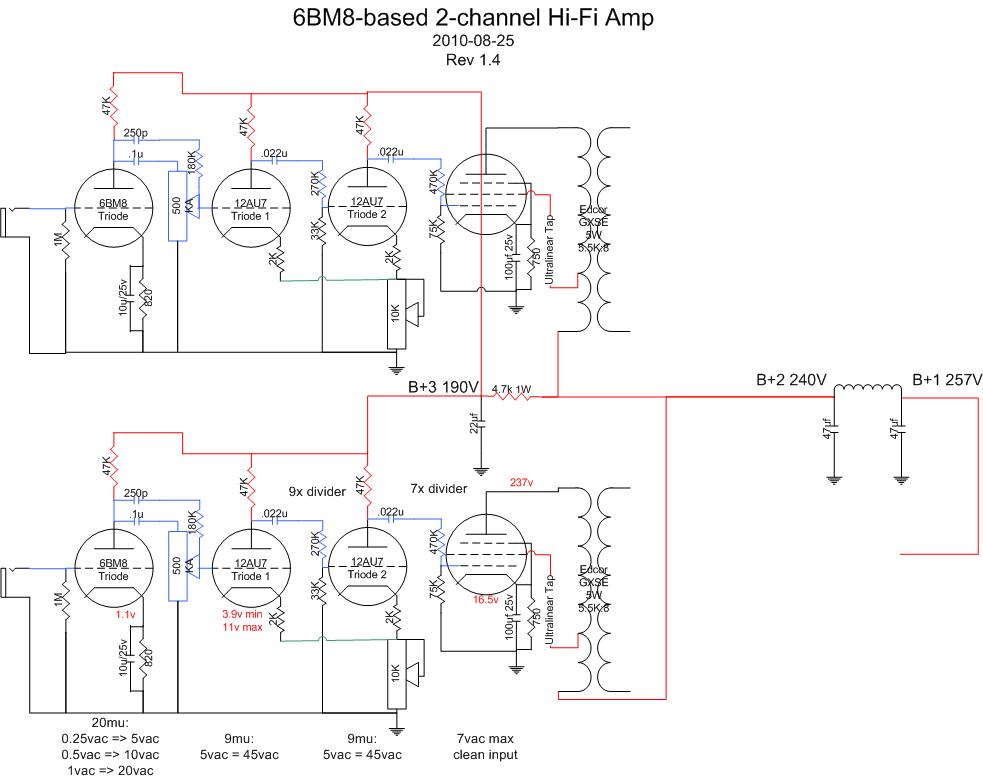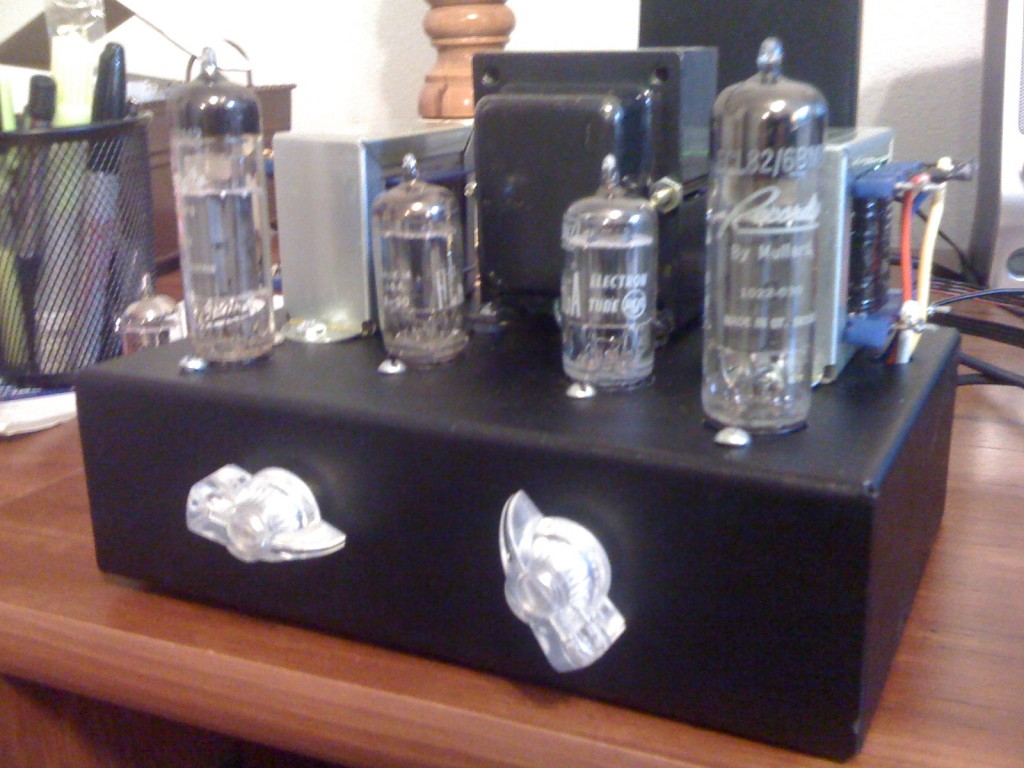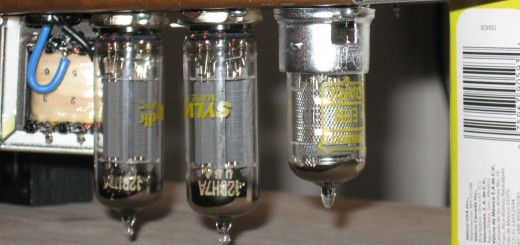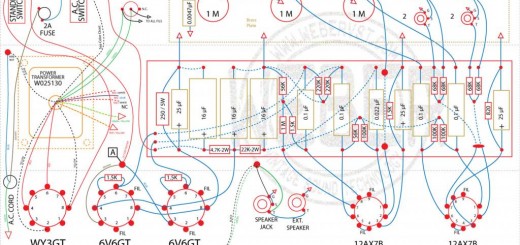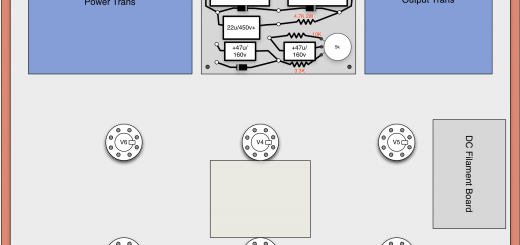This came up because I decided to start a little hifi project – something to push my bedroom TV’s audio to something better than the built-in speakers. So I thought, why not try to add adjustable compression? Warmly-biased triodes can compress one side of a soundwave, so what about sticking two in series to compress both sides?
The concept of the amp is relatively simple: Use a 6BM8′s triode to run the first gain stage, pass through a compression circuit, then use the 6BM8′s pentode in ultralinear mode for SE output. The trick is building that compression circuit in the middle.
When considering what triode to use I thought it’d be best to make the voltage dividers as small as possible; low-mu gain stages are desired. I started with a 12AU7. 12v input swing would be my target: mostly linear when center-biased but will compress as the bias goes hotter. With the volume pot cranked I want my minimum signal from the TV (assuming 0.1v) to reach 12v at the compressor… well, a 6BM8 triode has a maximum theoretical mu of 70, a far cry short of the 120 I’d need. So I needed a more sensitive triode… a 12AY7 would need 4-5v input swing… 40-50 mu… Maybe, that’s near the limit of what you can squeeze from a 6BM8 in the real world, so I went up to a 5751. I wanted to use low plate resistor values to minimize gain, but the linearity goes to crap faster than the gain decreases. I want the amplification to stay fairly linear when the compression is turned all the way off. 47k was as much of a compromise as I dared for a first shot.
As it turns out, the typical signal from the TV was much higher, and the dynamic range was narrower than expected. This resulted in the 5751 shifting abruptly from no compression to distortion without a useful middle ground. I ditched the 5751s in favor of 12AU7s – the lower gain was easier to work with, and (more importantly) the input sensitivity was lower. This gave the compressor circuit a wide enough operating range to do its job.
Results
If you’re standing right at the speakers you’ll notice a low hum that’s inducted straight from the PT to the OTs, due to the cramped quarters of the layout. Once you move back 5 feet, the hum is essentially unnoticeable. If it wasn’t for that tiny bit of hum, this amp would be perfect. The channel separation is incredible; it’s like wearing studio headphones, except there’s still that sense of space that headphones lose. The compression effect works, but it’s not incredibly strong. For already-compressed signals like rock music its effect is very slight – really just an attenuation. On classical music and movie dialogue it shifts the sound stage forward just enough to keep the soft bits from getting lost. On the positive side it is more transparent than I had expected. If I’m not listening for it I don’t notice the compression, just the nice sound coming from the amp.
I still have a small bit of tweaking to do. The 6bm8 pentodes are currently idling at 5.75w, I want to bring that down closer to 4w each. I’ll be experimenting with larger coupling capacitor values to see if I can get a little more low-end through. Depending on how that goes, the 150k resistor inline with the hi-frequency bypass cap may need an adjustment.


